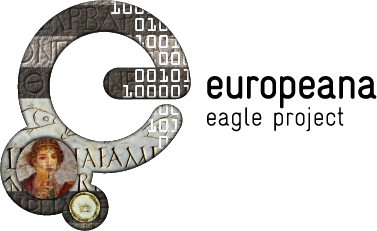 Central object-database of the Research Archive for Ancient Sculpture at the University of Cologne and the German Archaeological Institute (DAI)
Central object-database of the Research Archive for Ancient Sculpture at the University of Cologne and the German Archaeological Institute (DAI)
Arachne is the central object-database of the German Archaeological Institute (DAI). In 2004 the DAI and the Research Archive for Ancient Sculpture at the University of Cologne (FA) joined the effort to support Arachne as a tool for free internet-based research.
Definition
Arachne’s database design uses a model that builds on one of the most basic assumptions one can make about archaeology, classical archaeology or art history: all activities in these areas can most generally be described as contextualizing objects. Arachne tries to avoid the basic mistakes of earlier databases, which limited their object modeling to specific project-oriented aspects, thus creating separated containers of only a small number of objects. All objects inside Arachne share a general part of their object model, to which a more class-specific part is added that describes the specialised properties of a category of material like architecture or topography. Seen on the level of the general part, a powerful pool of material can be used for general information retrieval, whereas on the level of categories and properties, very specific structures can be displayed.
History
The ancient sculptures database was originally started in 1995 using FileMaker, and has been supported since 2001 by the established Chair for Humanities Computing at Cologne University. It is also used by students undertaking development projects.
Thanks to significant and ongoing support by the Deutsche Forschungsgemeinschaft since 2001, Arachne has been integrating negative archives of ancient sculpture that went beyond the specialised documentation retained in Cologne itself. The Malter- and Fittschen Archives have undergone this process, and since 2003 the negatives of ancient sculpture of the German Archaeological Institute in Rome have been undergoing integration. This amounted to a total of 40.000 high quality scans of ancient sculptures, presented with state-of-the-art scientific documentation. The digitalization of historic glass plate negative collections, which began in 2006 and was completed in August, 2009, resulted in the cataloguing of another 65.654 digital images, beginning with those of the German Archaeological Institutes in Athens, Cairo and Istanbul. Besides this larger project, many additional activities are going on on different levels, for example the online preparations for the »Corpus der Antiken Sarkophagreliefs«.
In 2004, Arachne was reworked from the bottom structurally as well as editorially. After that it was rebuilt from scratch using an MAMP environment. Being strategically positioned as a central object database for a large federal institution, and considering that it possesses about two million images inside its photographic archives and produces even more data each year in the course of its research activities, Arachne’s potential is anything but modest. In order to maximize that potential, there is still a long way to go.
